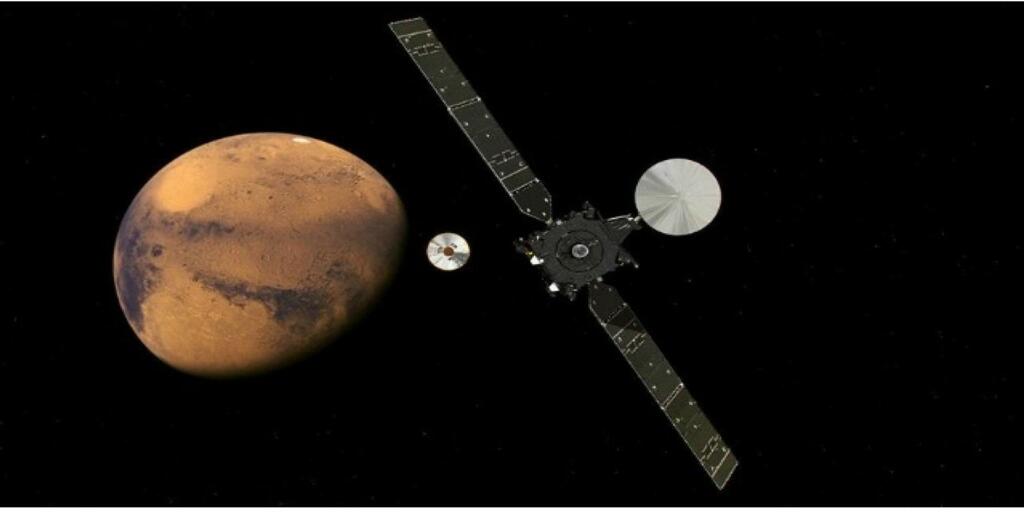We often hear that greatness is not measured in duration of something. Instead, it is the impact during that time period which makes something great or ordinary. India’s Mangalyaan stood on both criteria. Not only it stood the test of time by staying longer in the Mars Orbit, but also served way beyond its expectations.
No communication with Mangalyaan
It seems that Mangalyaan won’t be able to provide its services to Indians now. The Mars Orbiter Mission (MOM) has reportedly run out of the propellant. Its battery has also drained beyond the safe limit and now solar power won’t be able to charge it. It seems technically impossible to place it in the Red Planet’s Orbit.
According to a statement by an ISRO official, the final jolt to the mission was given by an eclipse. Two back-to-back eclipses are the reason why Mangalyaan’s battery was drained. Talking with PTI, the official said, “Recently there were back-to-back eclipses including one that lasted seven-and-half hours. As the satellite battery is designed to handle an eclipse duration of only about one hour and 40 minutes, a longer eclipse would drain the battery beyond the safe limit.”
Though ISRO has not come out with the official statement, the event is being termed as dawn on the coveted mission. Mangalyaan exceeded every expectation attached with it.
Took some time to materialise
The conception of the mission first came into public domain in 2008. 3 days before the ghastly Mumbai attack, G Madhavan Nair, then the chief of ISRO announced that India will be sending an uncrewed mission to Mangal. The feasibility studies for the mission were conducted by the Indian Institute of Space Science and Technology. The studies spanning over 4 years cost Rs 125 crore to the government’s exchequer.
Final approval for the government came in August 2012. Manmohan Singh government sanctioned Rs 450crore ($75 million according to the exchange rate of the time) for the project. Out of Rs 540 crore Rs 297 crore was capital expenditure on the part of ISRO. The ground stations and relay upgrades used for the project (costing Rs 297crore) are being used for other ISRO projects as well. Rest Rs 153 crore were spent on satellites.
Launch was itself a historic one
It took 15 months for ISRO to put together logistics for launching satellites. Earlier the launch was planned on 28 October 2013. But, due to poor weather, ISRO’s spacecraft tracking ships could not take up their location in the Pacific Ocean, due to which launch had to be postponed for a few days. Finally, the historic mission got kicked off on 5th of November 2013 on board the PSLV C25 rocket. Mangalyaan got placed in Martian orbit on 24 September, 2014.
Its launch was hailed all across the world. One of the reasons behind its historicity is that Mangalyaan is the cheapest interplanetary mission. Its cost was 1/10th of NASA’s MAVEN. In fact, PM Modi himself said that its cost was less than that of Hollywood movie “Gravity”. Even the Chinese termed it as “Pride of Asia”. Its team won US-based National Space Society’s 2015 Space Pioneer Award in the science and engineering category. India’s Rs 2000 currency note also contains an image of this Mars orbiter.
Technical capabilities and achievements
The spacecraft was given the task to study Martian surface features, morphology, mineralogy and the Martian atmosphere. For this purpose, it was equipped with Mars Color Camera (MCC), Thermal Infrared Imaging Spectrometer (TIS), Methane Sensor for Mars (MSM), Mars Exospheric Neutral Composition Analyser (MENCA) and Lyman Alpha Photometer (LAP). LAP and MSM conducted atmospheric studies, while MENCA conducted particle environment studies. Surface imaging studies were taken care of by TIS and MCC. MCC also conducted studies on Phobos and Deimos, two satellites of Mars.
MCC sent more than 1000 photos, based on which ISRO has designed a 120-page Mars Atlas. Credit for more than 35 research papers published in peer-review generals also goes to MCC. It also captured close range photos of Phobos satellite from a distance of 42,200 kilometres only. If that was not enough, MCC went a step further and captured a full disc image of Mars from an altitude of about 75,000 km with spatial resolution about 3.7 km.
A recent image of the mysterious moon of Mars, Phobos, as captured by India's Mars Orbiter Mission
For more details visit https://t.co/oFMxLxdign@MarsOrbiter #ISRO pic.twitter.com/5IJuSDBggx
— ISRO (@isro) July 3, 2020
Mars Orbiter Mission’s second Trajectory Correction Manoeuver completed successfully. Keep Cruising MOM ! pic.twitter.com/tz9g1tXhZq
— ISRO (@isro) June 11, 2014
All in all, India’s Mangalyaan sent more than 2 terabytes of data to ISRO. One of the images got featured over a photo of a 2016 issue of the National Geographic magazine.
Truly a historic one
Apart from path breaking studies, its endurance became possibly the biggest reason why it is counted as a top-notch interplanetary mission. Initially, it was slated to spy Mars for six months only, but possibly ISRO had underestimated its strength. Later, when it turned out to be more efficient than estimated, ISRO kept extending its time period. Even a 17-day communication blackout didn’t affect ISRO’s ability to monitor it.
Mangalyaan is possibly one of the wonders of space technology. India is slated to play a major role in this domain for the next 2 to 3 decades. If that transpires well, the role of Mangalyaan will be foremost.
Support TFI:
Support us to strengthen the ‘Right’ ideology of cultural nationalism by purchasing the best quality garments from TFI-STORE.COM
